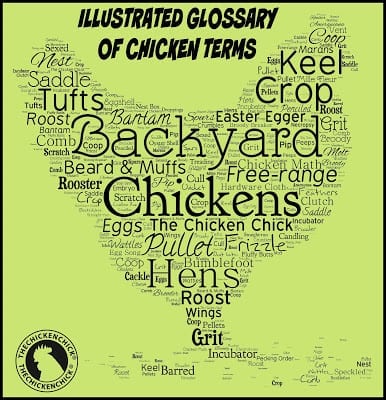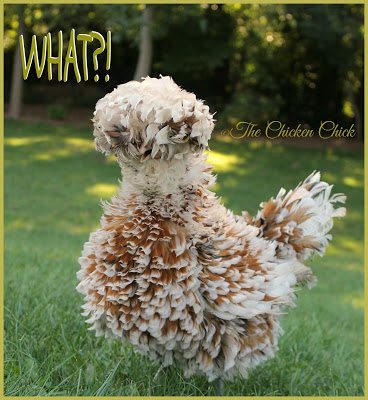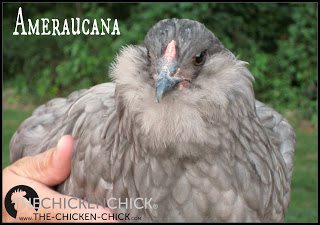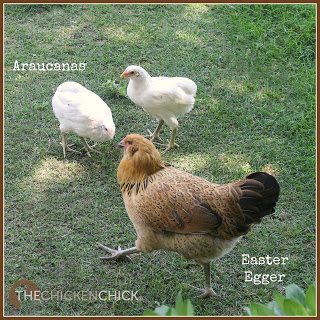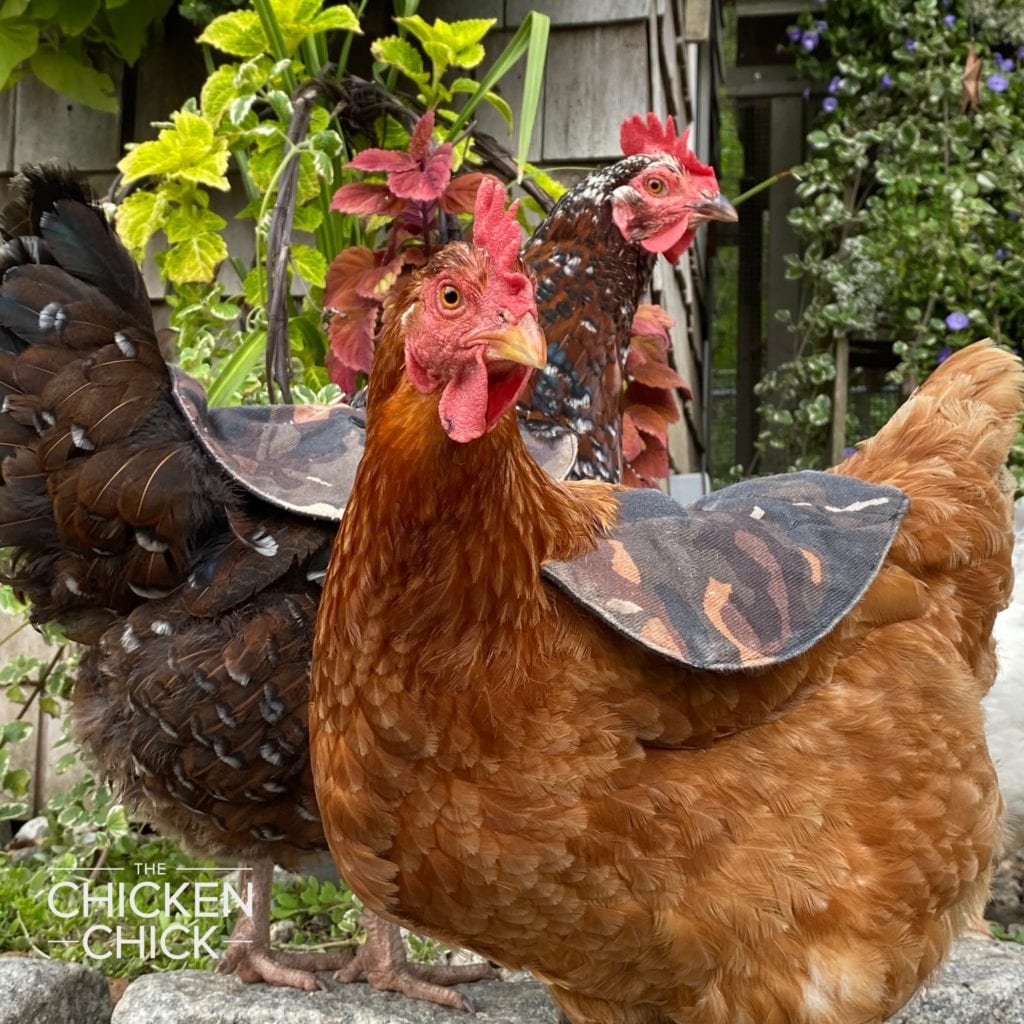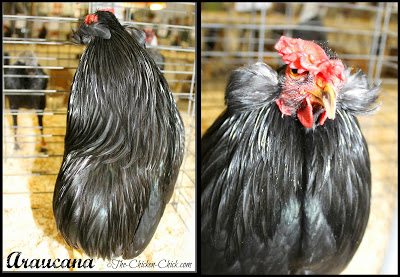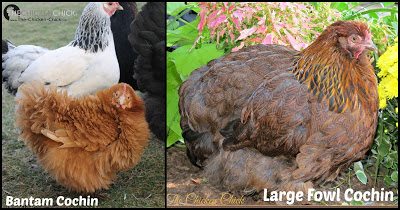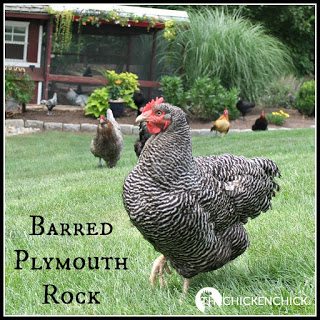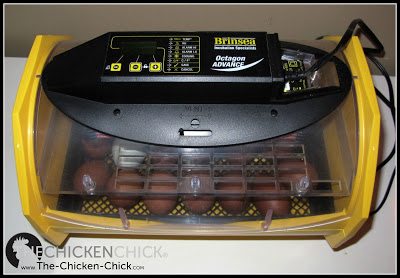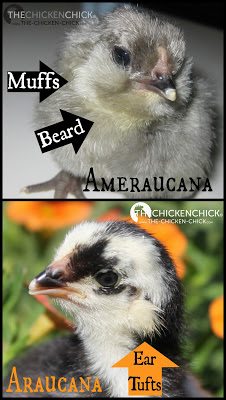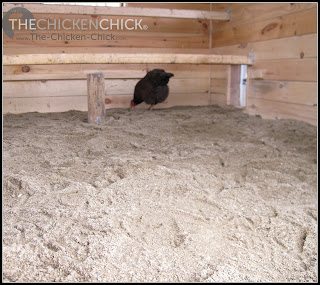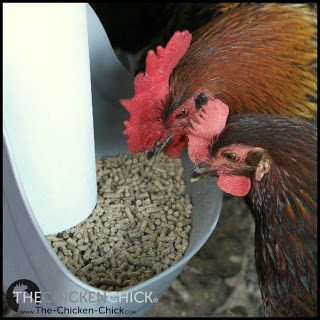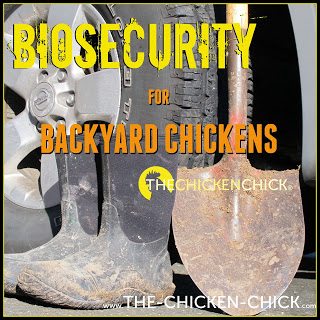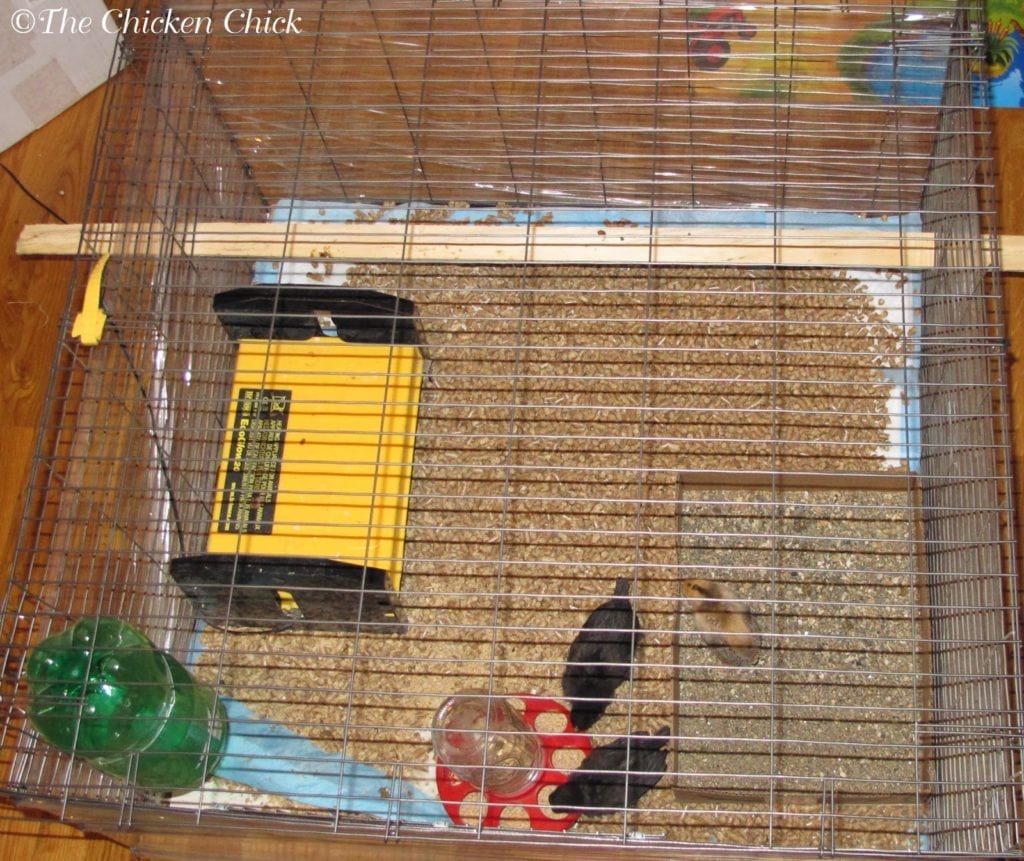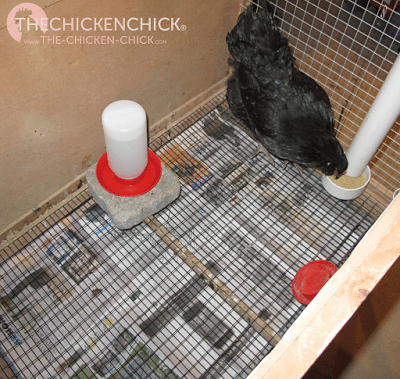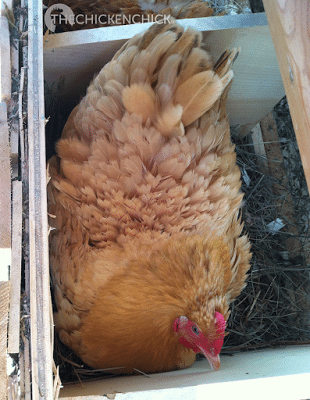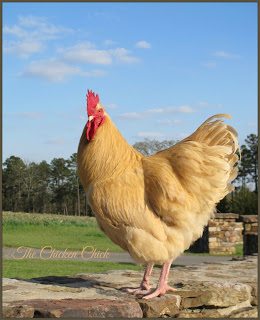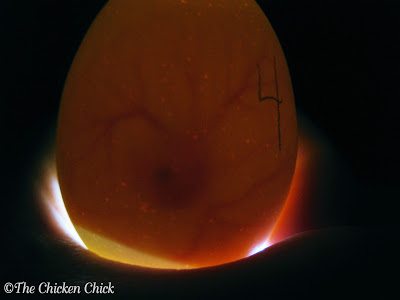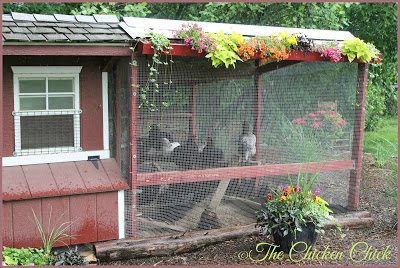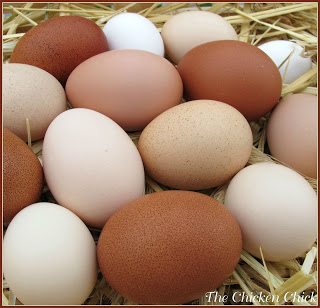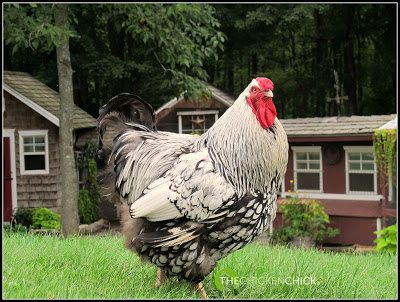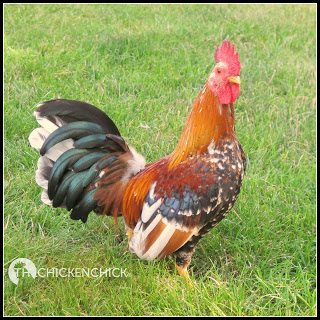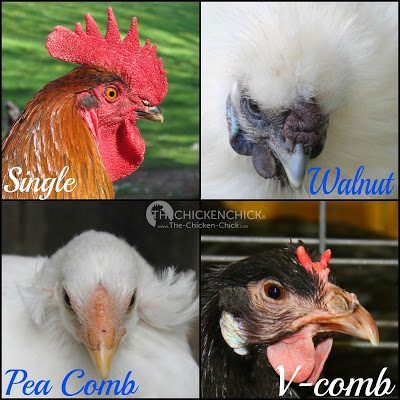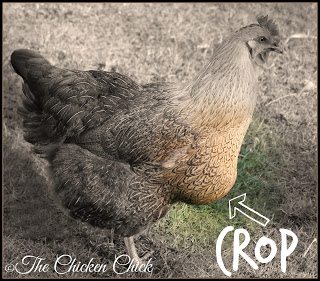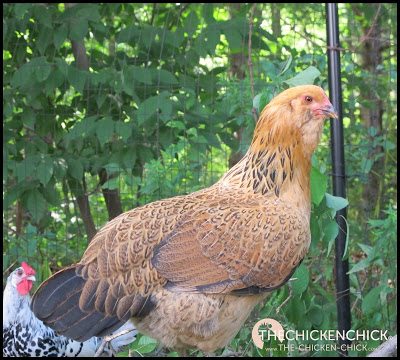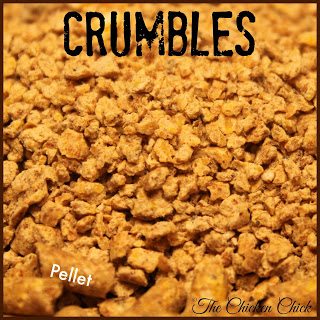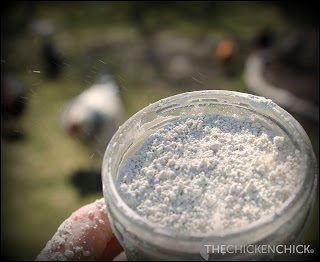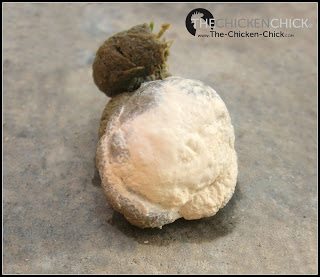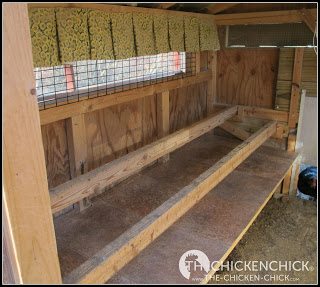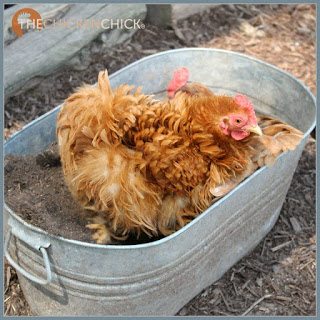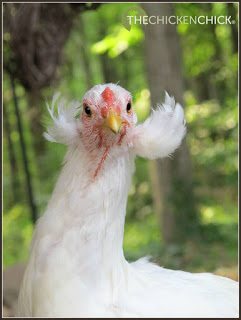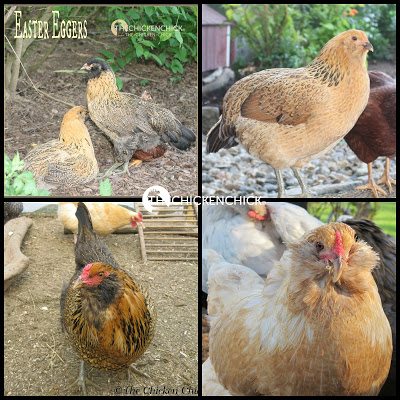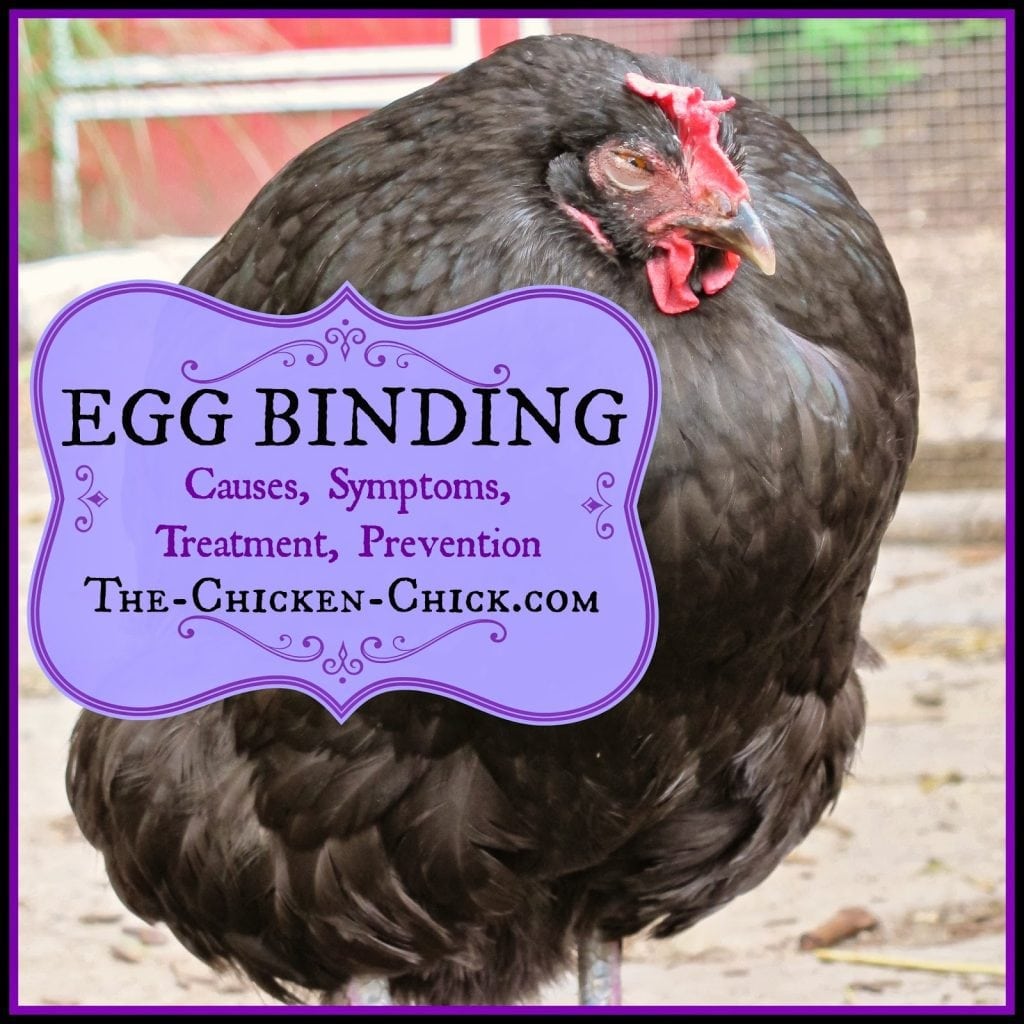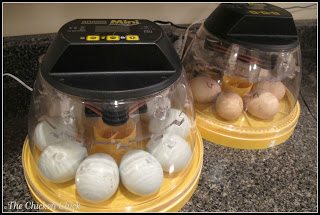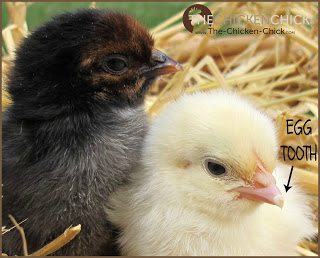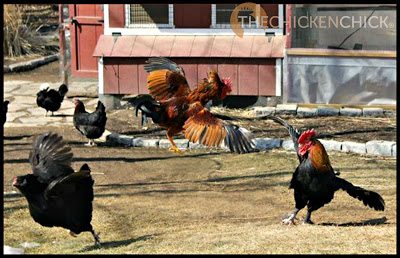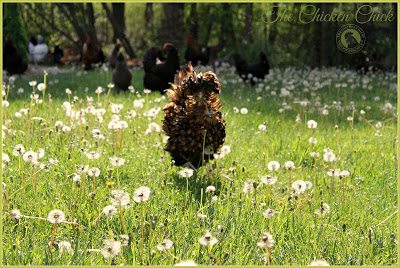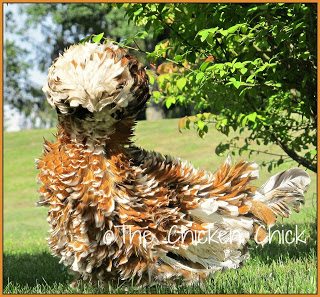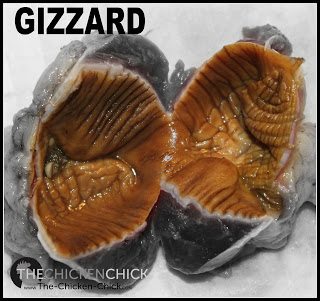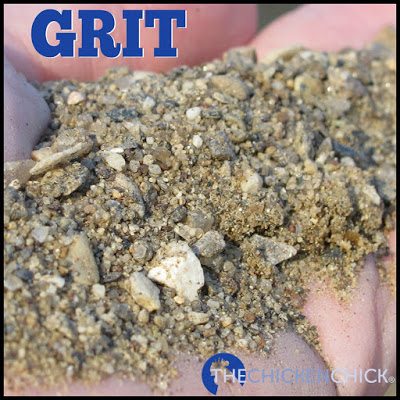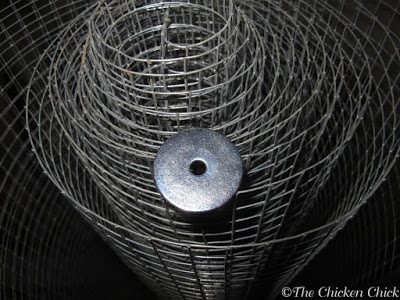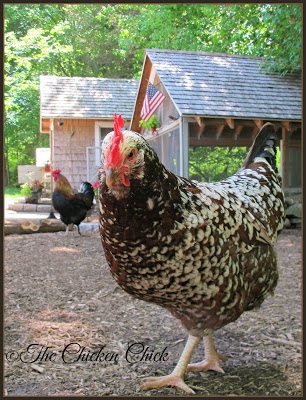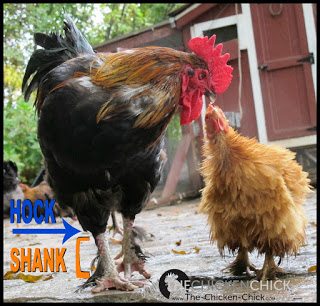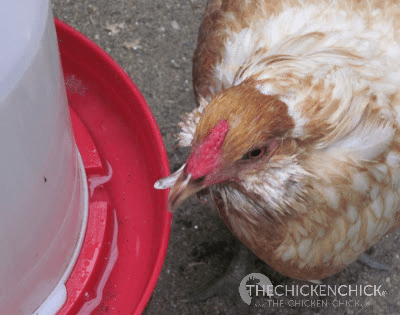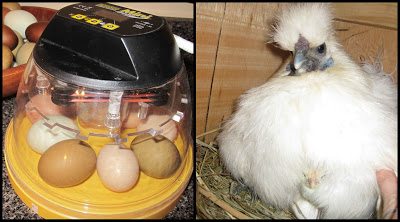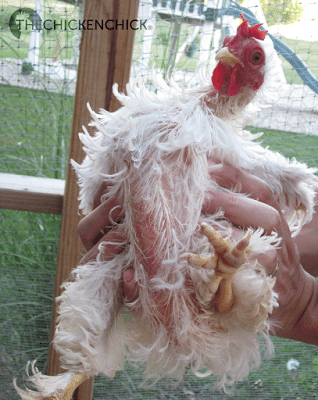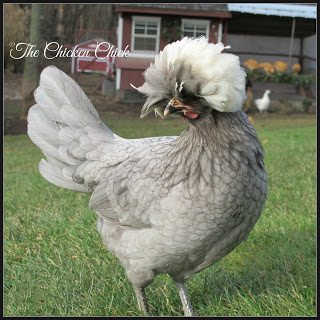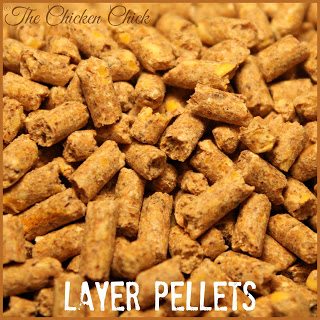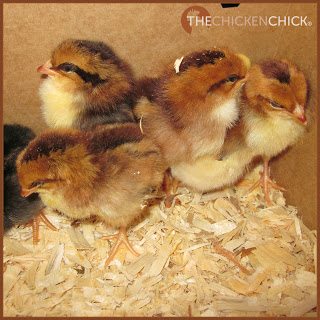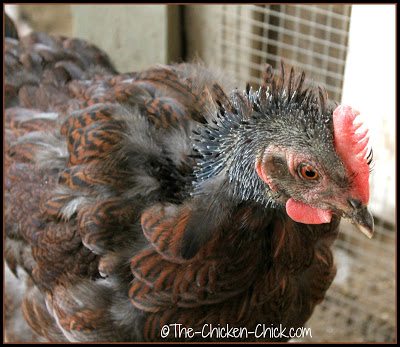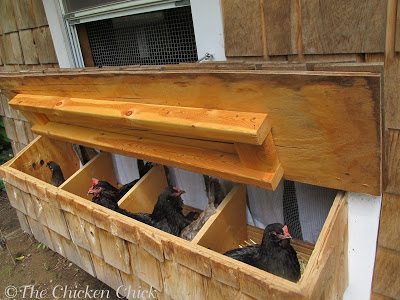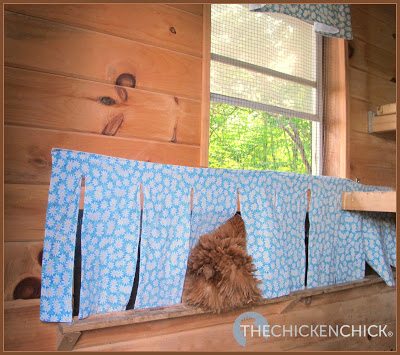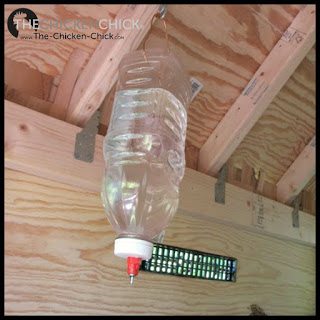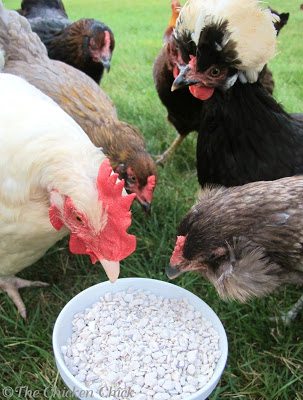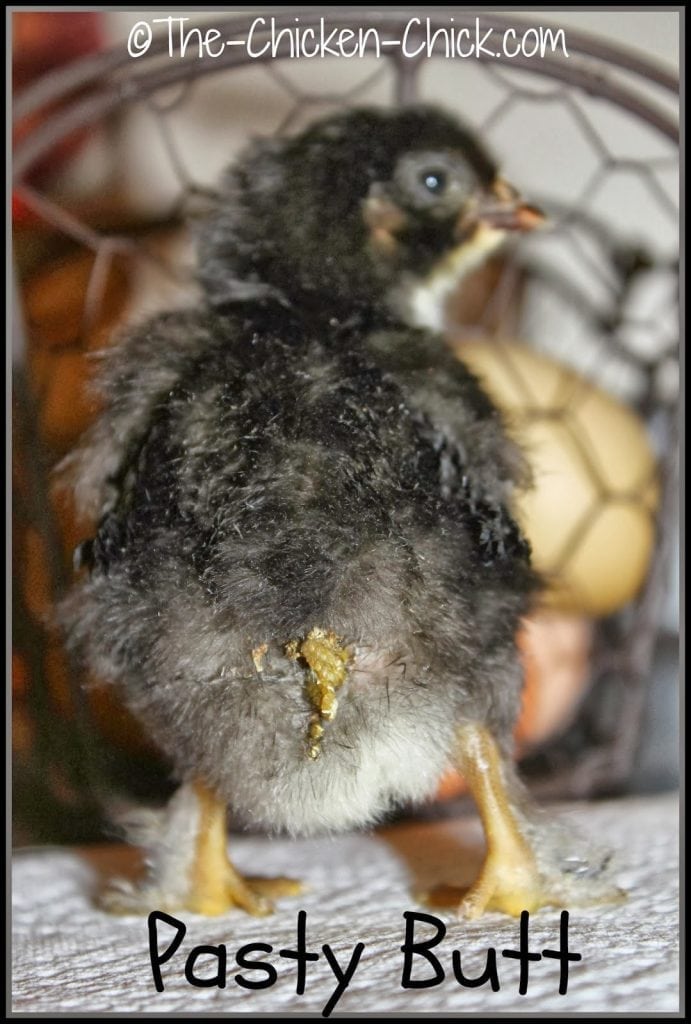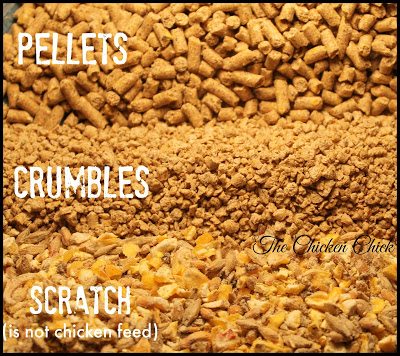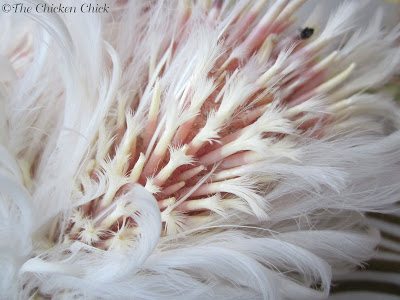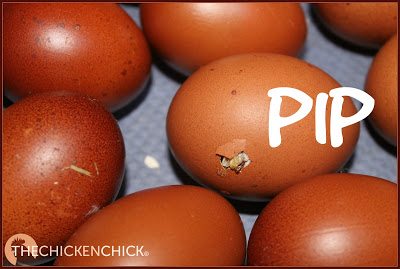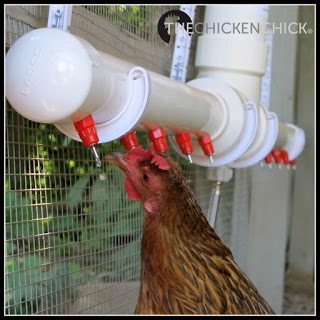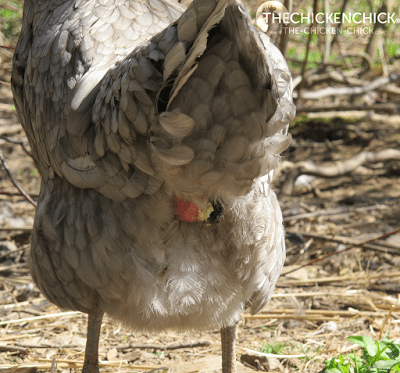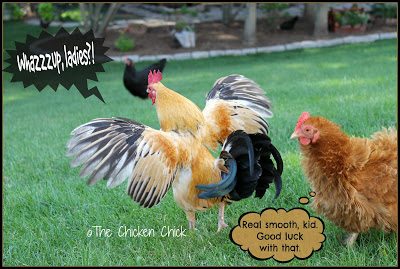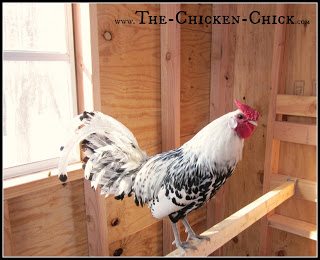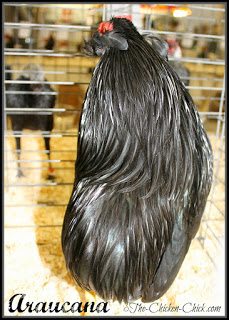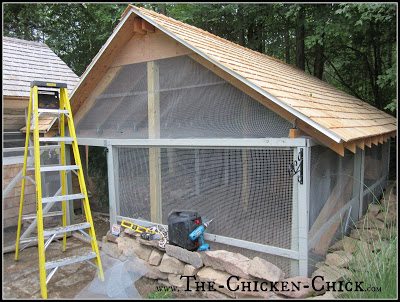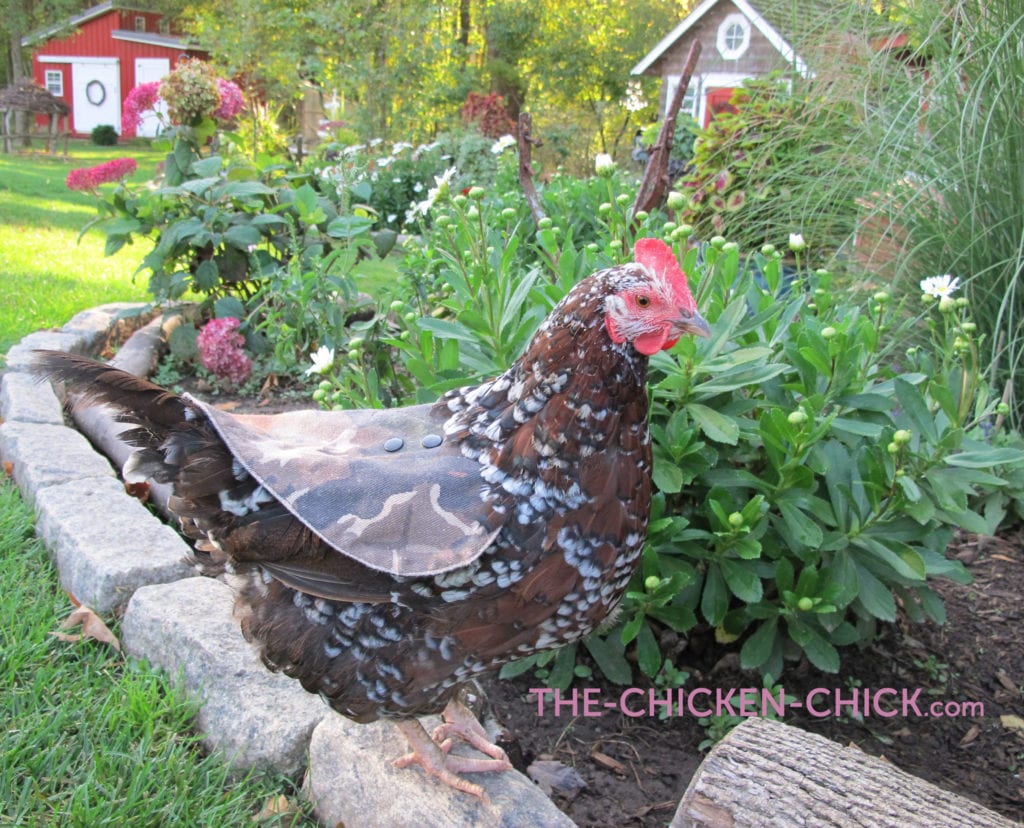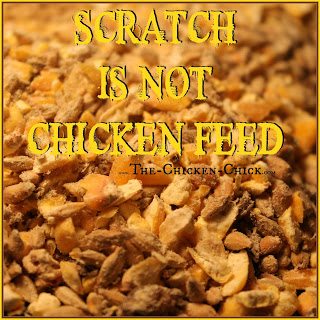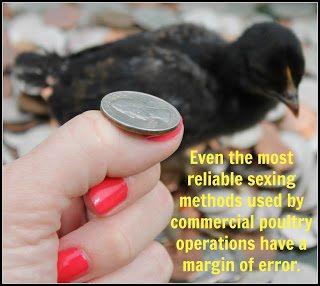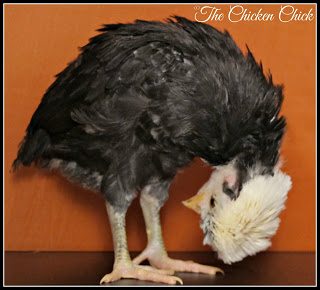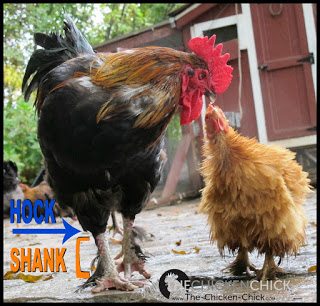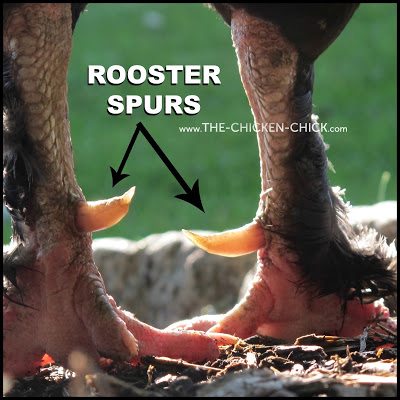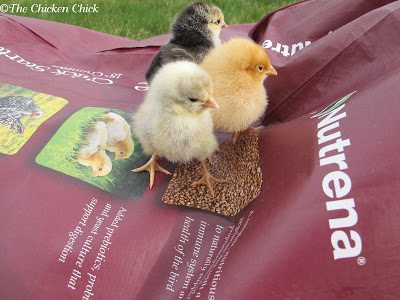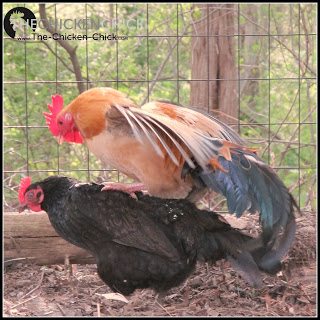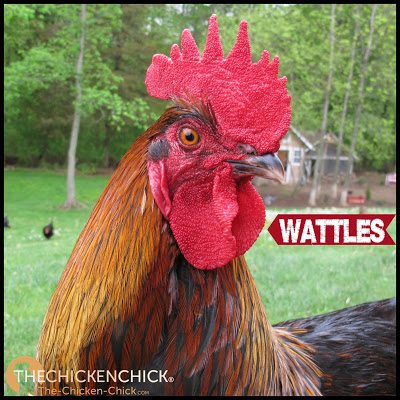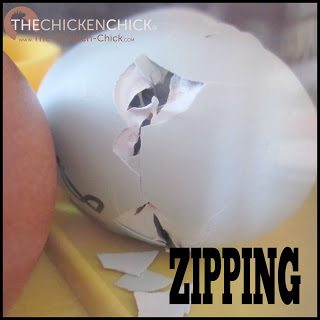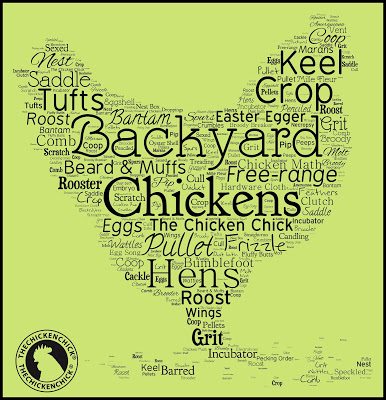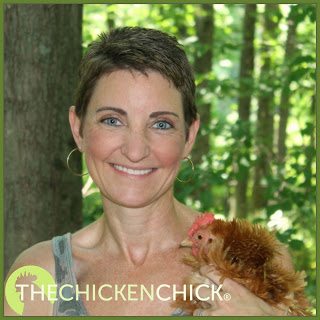AMERAUCANA: a blue egg-laying breed of chicken recognized by the American Poultry Association, developed in the US in the 1970s from Araucana chickens. Traits include: a pea comb, white skin, full tails, muffs and beards (always together) and slate or black legs; they have no ear tufts.
“AMERICANA”: a marketing tactic for selling hybrid Easter Egg chickens with spelling deceptively similar to the Ameraucana breed name. EEs are not an APA recognized breed, they are a mix of different breeds with one parent carrying a blue egg-laying gene. EEs can lay a rainbow of egg colors, including: any hue of blue or brown or any combination of the two. Traits include pea combs and wattles that are either small or absent, usually possess greenish legs and beards with muffs. EEs are found in an infinite array of feather colors, which makes them a beautiful and unique hybrid chicken.
APA: abbreviation for the American Poultry Association. The oldest livestock organization in North America; its mission is to promote and protect the standard-bred poultry industry in part by publishing the American Standard of Perfection with breed and variety descriptions of all recognized/APA-approved purebred fowl.
APRON: chicken aprons, also known as hen saddles, are pieces of material designed to protect a chicken’s skin and feathers from damage due to mating, injuries, self feather-picking or feather picking from other chickens.
ARAUCANA: A blue egg-laying breed of chicken originating in Chile. Traits include yellow skin, no tails (aka: rumpless) no beards and no muffs. Araucanas possess ear tufts, which are feathers that grow from a slender, fleshy flap just below the earlobe.
BANTAM: a chicken that is approximately ½ the size of a larger, standard sized counterpart within the same breed.
BANTY slang for bantam.
BARRED ROCK: slang for Barred Plymouth Rock, a brown egg-laying breed of chicken developed in Massachusetts.
BATOR: slang for incubator.
BEARD & MUFFS: short feathers underneath the chin and on the sides of a chicken’s face. Breeds with muffs always have beards too. Beards and muffs of Ameraucana chickens are often confused with ear tufts of Araucanas.
BEDDING: Misnomer for the material placed on the floor of a chicken coop for the purpose of absorbing moisture from droppings and facilitating waste management, typically pine shavings or sand. Since chickens do not sleep on the floor of the coop, this floor covering is more accurately referred to as litter.
BIDDY: slang for laying hen older than one year.
BILL-OUT: using the beak to scoop feed out of a feeder onto the floor. Also known as beaking-out.
BIOSECURITY: a program of disease prevention in a flock.
BLOOM/CUTICLE: the protective coating naturally coating an eggshell that limits moisture loss and prevents bacterial contamination of an its contents.
BOSS: abbreviation for black oil sunflower seeds.
BROILER: a meat chicken processed for meat at the age of 7-12 weeks or 2½ to 3½ pounds.
BROOD: to care for a group of chicks.
BROODER: a secure housing unit for raising baby chicks containing a heat source, water, feed and litter.
BROODY: a hen inspired by hormones to sit in a nest to hatch eggs.
BROODY BREAKER: a wire-bottomed cage placed in a well-lit location away from the chicken coop intended to interrupt a hen’s hormone-induced broody state for the benefit of her health and the welfare of the rest of the flock.
BROODY HEN: a hormone-driven hen that sits in a nest box, determined to hatching a clutch of eggs regardless of the presence or absence of eggs.
BUFF: a feather color; medium shade of orange-yellow with a rich, golden cast; not reddish or lemon. Several breeds have a buff variety. Buff is not a breed of chicken.
BUMBLEFOOT: an infection on a chicken’s foot characterized by swelling, sometimes redness and often a characteristic black or brown scab on the bottom of the foot. Left untreated, serious cases of bumble foot can be fatal as the infection can spread to other tissues and bones.
CANDLE/CANDLING: to examine the contents of an egg by shining a light through the intact shell.
CAPON: a male chickens that has had its reproductive organs surgically removed.
CHICK: a newly hatched chicken.
CHICKEN, backyard: a male or female bird of the genus Gallus, that is commonly raised in backyards for egg production, as pets and less commonly, for meat. A chick is a newly hatched chicken.
CHICKEN RUN: a fenced, outdoor enclosure attached to a chicken coop; aka: pen, run, yard.
CLOACA: the area inside the vent through which digestive and reproductive tracts empty.
CLUTCH: an accumulation of eggs in a nest.
COCCIDIOSIS: a common, highly contagious, often deadly, intestinal disease in chickens caused by several species of parasites. The parasites rapidly multiply, damaging the intestinal lining, preventing chickens from absorbing nutrients from their food. Coccidioisis is prevented by keeping housing clean and dry. Outbreaks of the disease are easily treated with medication.
COCK: A male chicken over one year of age, also known as a rooster.
COCKEREL: A male chicken less than 1 year old.
COMB: the fleshy projection on the top of a chicken’s head down to its beak. Combs occur in a variety of styles and are usually larger on males than on females.
COOP: a housing unit for chickens.
CONFINED FLOCK: chickens that are restricted to a fenced yard/chicken run during the day in contrast to free-range chickens that are not bound to the coop and run area.
CROP: a small pocket at the bottom of a chicken’s esophagus where food is moistened and stored before being further digested. Think of the esophagus as a long water slide that extends from the mouth all the way down the neck, emptying into the crop. The crop is located slightly to the side of its right breast muscle.
CROSS-BREED: a chicken whose parents were different breeds. aka: hybrid, mix. Easter Eggers are the most popular cross-breed.
CRUMBLES: chicken feed that is crushed into small pieces.
CULL: to remove a chicken from the flock by re-homing or euthanizing
CUTICLE/BLOOM: the moist, protective coating on an eggshell intended to limit moisture loss and prevent bacterial contamination of the egg’s contents.
DE: abbreviation for food grade diatomaceous earth. Food grade DE is a fossilized mineral dust with microscopic, razor-sharp edges that acts as a mechanical insecticide, slicing into insects’ bodies, dehydrating them. Regular exposure to DE is a health hazard to chickens since, when inhaled, its crystalline silica particles adhere to and scar their lung tissue. DE loses its effectiveness when wet, therefore cannot de-worm, ie: DE cannot eliminate a worm overload from the digestive tract of a chicken mechanically. While there are trace minerals in DE, there are other, much safer, natural sources of trace minerals for chickens to consume without the respiratory health risk DE poses to chickens and humans.
DEPOPULATE: to destroy/euthanize/kill a flock of chickens to stop the spread of disease.
DIATOMACEOUS EARTH: aka, DE. Food grade diatomaceous earth is a fossilized mineral dust with microscopic, razor-sharp edges that acts as a mechanical insecticide, slicing into insects’ bodies, dehydrating them to death. Regular exposure to diatomaceous earth is a health hazard to chickens since, when inhaled, its crystalline silica particles adhere to and scar their lung tissue. Diatomaceous earth loses its effectiveness when wet, therefore cannot de-worm chickens, ie: DE cannot eliminate a worm overload from the digestive tract of a chicken mechanically. While there are trace minerals in DE, there are other, much safer, natural sources of trace minerals for chickens to consume without the respiratory health risk DE poses to chickens and humans.
DROPPINGS: chicken poop, which consists primarily of solid digestive waste, water and liquid waste. There is a wide range of normal-looking chicken poop.
DROPPINGS BOARD: a shelf placed underneath roosts in a chicken coop to collect chicken droppings produced overnight for removal.
DUST BATH: the chicken equivalent of a shower. Chickens care for their feathers and skin by digging shallow ditches in soil, mulch, sand, even pine shavings, then tossing it onto themselves. The dirt coats their feathers, settling next to their skin, absorbing excess moisture and oil. It also serves to repel parasites that would otherwise set up housekeeping among the feathers, causing skin and feather damage, irritation, weight loss and interfere with egg production and fertility. In hot weather, chickens dig down into the ground to rest in cooler soil.
EE: abbreviation for the hybrid chicken, Easter Egger.
EAR TUFTS: feathers growing from a flap of skin just below the ear of some Araucana chickens, which is inherited genetically. Chick inheriting the tufted gene from both parents will die prior to hatch.
EASTER EGGERS: hybrid chickens, not an APA recognized breed, that lay a wide range of egg colors from brown to blue or any combination of thereof. Abbreviated EE. Traits include pea combs and wattles that are either small or absent. usually possess greenish legs and beards with muffs. EEs are found in an infinite array of feather colors, which makes them beautiful and unique hybrid chickens.
EGG BINDING: the emergency condition occurring when an egg is stuck in a hen’s reproductive tract. Risk factors for egg binding include: a calcium or other nutritional deficiency, obesity, an excessively large or misshapen egg and an oviduct infection, to name a few. Symptoms of egg binding resemble general symptoms of a sick chicken including, loss of appetite, disinterest in drinking, frequent, uncharacteristic sitting, droopy/depressed/pale comb and wattles.
EGG SONG: vocalizations hens may make before or after egg-laying.
EGGLETS: Chicken Chick slang for hatching eggs (noun).
EGG TOOTH: the hard tooth-like structure on the tip of a chick’s beak used to break through the eggshell during hatch.
ELECTROLYTES: a mineral/salts mixture added to water during times of stress, shock or dehydration to restore a chicken’s natural balance.
FEATHER PICKING: a behavioral problem that can be caused by a variety of factors including, stress from crowded living conditions, constant light and nutritional deficiencies, to name a few.
FLOG: term used to describe an attack by a chicken on a person or another chicken, most often perpetrated by an aggressive rooster, which may involve jumping onto a victim and/or beating them with its wings.
FREE-RANGE FLOCK: chickens with unrestricted access to a yard or pasture in comparison to chickens that are primarily confined to a chicken yard during the day.
FRIZZLE: a genetically determined feather type that curls backwards and away from a chicken’s body. Frizzled feathers can occur in a variety of breeds, most commonly, Cochins and Polish.
GIZZARD: the muscle in a chicken’s digestive tract responsible for grinding fibrous food with the help of grit (sand/stones/oyster shells).
GRIT: hard materials such as sand, dirt or small stones that aid in digestion. Since chickens have no teeth, fibrous foods are ground with grit in the gizzard, which is a muscle in the digestive tract. Chickens foraging outside will naturally pick up bits of grit from the ground, those that do not forage outside must have grit supplied to them.
GROWER FEED: chicken feed formulated for adolescent, growing chickens that is ordinarily fed from nine to 20 weeks.
HARDWARE CLOTH: 1/4″ or 1/2″ welded wire mesh fencing used in chicken coops and runs to protect against predators.
HEN: a female chicken that is at least one year of age.
HOCK: the joint on a chicken’s leg above the shank.
HONE: beak filing performed by a chicken to maintain its shape and length. achieved by wiping the beak on hard objects. Confined chickens should be provided with access to a rock or similar object for honing purposes. Scissor-beaked chickens unable to hone their beaks properly, need regular beak trimming or filing.
INCUBATION: the process of hatch eggs naturally under a hen or with an incubator.
KEEL: part of a chicken’s breast bone where the wing muscles attach.
LAYER/LAYING HEN: an adult, female chicken producing eggs.
LAYER FEED/LAYER RATION: a nutritionally complete chicken feed formulated with calcium for laying hens.
LITTER: the material placed on the floor of a chicken coop for the purpose of absorbing moisture from droppings and facilitating waste management (typically pine shavings or sand). Also misleadingly referred to as bedding because chickens do not sleep on the floor of the coop.
MOLT: the regular shedding and growth of new feathers.
NECROPSY: a post mortem examination of a chicken performed to determine the cause of death. Sometimes sick chickens are euthanized to determine the cause of illness in order to protect remaning flock members if possible.
NEST BOX: a box inside a chicken coop designed for hens to lay their eggs in.
NEST BOX CURTAINS: material covering the entrances to nest boxes that provide privacy for broody and laying hens, discourage vent-picking and egg-eating and are too stinkin’ cute not to hang in a well-appointed chicken coop.
NIPPLE WATERER aka: PNW or nipple drinker. A system of water delivery to chickens in which the water is housed in a container and released when chickens peck upwards at a blunt metal pin containing a ball bearing. The primary advantage to nipple drinkers is that water cannot be fouled by chicken droppings or litter as with other types of poultry drinkers.
OLIVE EGGER: a chicken that is produced by crossing any dark brown egg-laying breed (Barnevelder, Empordanesa, Marans, Pendesenca or Welsummers) with a blue egg-laying breed (Ameraucanas, Araucanas, Cream Legbar). Hens produced from these pairings are hybrids that will produce olive green eggs.
OYSTER SHELL: a source of calcium carbonate offered to laying hens free-choice as a dietary supplement in order to ensure the ability to produce strong eggshells. Each laying hen has different calcium requirements and will consume as much as they need. Crushed, clean, dried eggshells may be combined with oyster shells, but eggshells alone are not an adequate source of supplemental calcium.
PASTY BUTT: also known as pasted vent and pasting up is a condition that occurs in baby chicks when droppings stick to the down surrounding their vent. Poop builds up to form a blockage that can be fatal to the chicken unless removed.
PECKING ORDER: the social hierarchy of a flock. Chickens higher in the pecking order eat first, enjoy the best dust bath areas and preferred roost positions.
PELLETS: chicken feed shaped into small, bullet-sized pieces.
PERCH: see, ROOST, below
PIN FEATHER: a newly emerging feather contained within a vein-filled shaft with a waxy coating that is sensitive and will bleed if cut or injured. Once the feather unfurls, the vein dries up. aka: blood feather.
PIP: a hole made by a chick hatching from its eggshell with its egg tooth.
PNW: abbreviation for poultry nipple waterer. a system of water delivery to chickens in which water is housed in a container and released when chickens peck upwards at a blunt metal pin containing a ball bearing. The primary advantage to nipple drinkers is that water cannot be fouled by chicken droppings or litter as with other types of poultry drinkers.
POINT OF LAY: the age at which a pullet is expected to being producing eggs (average range=5-7 months).
PROLAPSE: also known as prolapsed oviduct, blow-out, cloacal prolapse, or pickout, … “is a condition in which the lower part of a hen’s oviduct turns inside out and protrudes through the vent.”
PULLET: a female chicken less than 1 year old.
RATION: a nutritionally complete feed for chickens.
ROO: slang for rooster or cock.
ROOLET: Chicken Chick slang for a young, male chicken.
ROOSTER: a male chicken that is at least 1 year old.
ROOST: a branch or board chickens stand on at night to sleep or while resting during the day.
RUMPLESS: a chicken trait that describes the absence of a tail bone and tail. Araucanas are a rumpless breed.
RUN: a fenced, outdoor enclosure attached to a chicken coop. aka: chicken run or pen.
SADDLE: a hen saddle, also called an apron, is a pieces of material designed to protect a chicken’s skin and feathers from damage due to mating, injuries, self feather-picking or feather picking from other chickens.
SCRATCH: a chicken treat consisting primarily of cracked corn and a number of grains. It is a source of energy, (think: carbs) but is not a good source of vitamins, minerals or protein. In cold weather, chickens expend extra energy to keep warm and a small amount of scratch just before dusk is a decent source of energy, but too much can contribute to obesity and obesity-related deaths.
SEXED: chicks that have been sorted by gender by anatomical examination within 24 hours after hatching, often sold as “sexed pullets.” Sexing of day old chicks is approximately 90% accurate, therefore, sexed chicks can be male.
SEXING: one of many processes of identifying a chicken’s gender.
SHANK: the portion of a chicken’s leg between its hock and toes.
SPURS: spurs are appendages towards the back of a rooster’s shanks that are used for defensive fighting and flock protection. Spurs grow out of the shank bone and are covered by a a hard, cone-shaped, horn-like material much like a thick fingernail. As a rooster ages, spurs need trimming to avoid injuries to the rooster himself, flock-mates and chicken keepers. Some hens can grow spurs too.
STARTER FEED: nutritionally complete ration for chicks up to 8 weeks old, available in both medicated and unmedicated varieties. Medicated feed contains amprolium, which protects chicks from the progression of coccidiosis, a common and deadly intestinal disease that is spread in fecal matter in warm, moist litter conditions. Chicks that have received the coccidiosis vaccine should not be fed medicated starter, as the amprolium will render the vaccine useless and the chicks vulnerable to the disease.
STRAIGHT RUN: a group of chicks that have not been sorted by gender.
SUBMISSIVE SQUAT: the deferential posture a sexually mature pullet or hen assumes when she is approached by a rooster for mating. She crouches down, spreads her wings to the side for balance and lowers her tail for the rooster to “tread” her (or hop on her back and do his thang). She may also display the submissive squat when approached by a person, particularly when a hand is extended to pet her.
TREADING: the manner in which a rooster prepares to mate a hen, which resembles a piggy-back ride, standing on her back, holding her neck feathers with his beak and steadying himself with his feet.
VENT: the opening to the cloaca from which droppings are eliminated and eggs emerge.
WATTLES: fleshy, red flaps of skin located underneath a chicken’s beak and chin.
ZIPPING: the action of a chick during hatch as it chips away at the circumference of the eggshell with its egg tooth. (might more sensibly be called un-zipping).
Further reading and sources:
http://cal.vet.upenn.edu/projects/parasit06/website/lab2.htm
http://www.accessdata.fda.gov/scripts/AnimalDrugsAtFDA/index.cfm?gb=2
The Chicken Health Handbook, Damerow, Gail. Storey Publishing,
Kathy Shea Mormino
Affectionately known internationally as The Chicken Chick®, Kathy Shea Mormino shares a fun-loving, informative style to raising backyard chickens. …Read on




shop my SPONSORS
AMERAUCANA: a blue egg-laying breed of chicken recognized by the American Poultry Association, developed in the US in the 1970s from Araucana chickens. Traits include: a pea comb, white skin, full tails, muffs and beards (always together) and slate or black legs; they have no ear tufts.
“AMERICANA”: a marketing tactic for selling hybrid Easter Egg chickens with spelling deceptively similar to the Ameraucana breed name. EEs are not an APA recognized breed, they are a mix of different breeds with one parent carrying a blue egg-laying gene. EEs can lay a rainbow of egg colors, including: any hue of blue or brown or any combination of the two. Traits include pea combs and wattles that are either small or absent, usually possess greenish legs and beards with muffs. EEs are found in an infinite array of feather colors, which makes them a beautiful and unique hybrid chicken.
APA: abbreviation for the American Poultry Association. The oldest livestock organization in North America; its mission is to promote and protect the standard-bred poultry industry in part by publishing the American Standard of Perfection with breed and variety descriptions of all recognized/APA-approved purebred fowl.
APRON: chicken aprons, also known as hen saddles, are pieces of material designed to protect a chicken’s skin and feathers from damage due to mating, injuries, self feather-picking or feather picking from other chickens.
ARAUCANA: A blue egg-laying breed of chicken originating in Chile. Traits include yellow skin, no tails (aka: rumpless) no beards and no muffs. Araucanas possess ear tufts, which are feathers that grow from a slender, fleshy flap just below the earlobe.
BANTAM: a chicken that is approximately ½ the size of a larger, standard sized counterpart within the same breed.
BANTY slang for bantam.
BARRED ROCK: slang for Barred Plymouth Rock, a brown egg-laying breed of chicken developed in Massachusetts.
BATOR: slang for incubator.
BEARD & MUFFS: short feathers underneath the chin and on the sides of a chicken’s face. Breeds with muffs always have beards too. Beards and muffs of Ameraucana chickens are often confused with ear tufts of Araucanas.
BEDDING: Misnomer for the material placed on the floor of a chicken coop for the purpose of absorbing moisture from droppings and facilitating waste management, typically pine shavings or sand. Since chickens do not sleep on the floor of the coop, this floor covering is more accurately referred to as litter.
BIDDY: slang for laying hen older than one year.
BILL-OUT: using the beak to scoop feed out of a feeder onto the floor. Also known as beaking-out.
BIOSECURITY: a program of disease prevention in a flock.
BLOOM/CUTICLE: the protective coating naturally coating an eggshell that limits moisture loss and prevents bacterial contamination of an its contents.
BOSS: abbreviation for black oil sunflower seeds.
BROILER: a meat chicken processed for meat at the age of 7-12 weeks or 2½ to 3½ pounds.
BROOD: to care for a group of chicks.
BROODER: a secure housing unit for raising baby chicks containing a heat source, water, feed and litter.
BROODY: a hen inspired by hormones to sit in a nest to hatch eggs.
BROODY BREAKER: a wire-bottomed cage placed in a well-lit location away from the chicken coop intended to interrupt a hen’s hormone-induced broody state for the benefit of her health and the welfare of the rest of the flock.
BROODY HEN: a hormone-driven hen that sits in a nest box, determined to hatching a clutch of eggs regardless of the presence or absence of eggs.
BUFF: a feather color; medium shade of orange-yellow with a rich, golden cast; not reddish or lemon. Several breeds have a buff variety. Buff is not a breed of chicken.
BUMBLEFOOT: an infection on a chicken’s foot characterized by swelling, sometimes redness and often a characteristic black or brown scab on the bottom of the foot. Left untreated, serious cases of bumble foot can be fatal as the infection can spread to other tissues and bones.
CANDLE/CANDLING: to examine the contents of an egg by shining a light through the intact shell.
CAPON: a male chickens that has had its reproductive organs surgically removed.
CHICK: a newly hatched chicken.
CHICKEN, backyard: a male or female bird of the genus Gallus, that is commonly raised in backyards for egg production, as pets and less commonly, for meat. A chick is a newly hatched chicken.
CHICKEN RUN: a fenced, outdoor enclosure attached to a chicken coop; aka: pen, run, yard.
CLOACA: the area inside the vent through which digestive and reproductive tracts empty.
CLUTCH: an accumulation of eggs in a nest.
COCCIDIOSIS: a common, highly contagious, often deadly, intestinal disease in chickens caused by several species of parasites. The parasites rapidly multiply, damaging the intestinal lining, preventing chickens from absorbing nutrients from their food. Coccidioisis is prevented by keeping housing clean and dry. Outbreaks of the disease are easily treated with medication.
COCK: A male chicken over one year of age, also known as a rooster.
COCKEREL: A male chicken less than 1 year old.
COMB: the fleshy projection on the top of a chicken’s head down to its beak. Combs occur in a variety of styles and are usually larger on males than on females.
COOP: a housing unit for chickens.
CONFINED FLOCK: chickens that are restricted to a fenced yard/chicken run during the day in contrast to free-range chickens that are not bound to the coop and run area.
CROP: a small pocket at the bottom of a chicken’s esophagus where food is moistened and stored before being further digested. Think of the esophagus as a long water slide that extends from the mouth all the way down the neck, emptying into the crop. The crop is located slightly to the side of its right breast muscle.
CROSS-BREED: a chicken whose parents were different breeds. aka: hybrid, mix. Easter Eggers are the most popular cross-breed.
CRUMBLES: chicken feed that is crushed into small pieces.
CULL: to remove a chicken from the flock by re-homing or euthanizing
CUTICLE/BLOOM: the moist, protective coating on an eggshell intended to limit moisture loss and prevent bacterial contamination of the egg’s contents.
DE: abbreviation for food grade diatomaceous earth. Food grade DE is a fossilized mineral dust with microscopic, razor-sharp edges that acts as a mechanical insecticide, slicing into insects’ bodies, dehydrating them. Regular exposure to DE is a health hazard to chickens since, when inhaled, its crystalline silica particles adhere to and scar their lung tissue. DE loses its effectiveness when wet, therefore cannot de-worm, ie: DE cannot eliminate a worm overload from the digestive tract of a chicken mechanically. While there are trace minerals in DE, there are other, much safer, natural sources of trace minerals for chickens to consume without the respiratory health risk DE poses to chickens and humans.
DEPOPULATE: to destroy/euthanize/kill a flock of chickens to stop the spread of disease.
DIATOMACEOUS EARTH: aka, DE. Food grade diatomaceous earth is a fossilized mineral dust with microscopic, razor-sharp edges that acts as a mechanical insecticide, slicing into insects’ bodies, dehydrating them to death. Regular exposure to diatomaceous earth is a health hazard to chickens since, when inhaled, its crystalline silica particles adhere to and scar their lung tissue. Diatomaceous earth loses its effectiveness when wet, therefore cannot de-worm chickens, ie: DE cannot eliminate a worm overload from the digestive tract of a chicken mechanically. While there are trace minerals in DE, there are other, much safer, natural sources of trace minerals for chickens to consume without the respiratory health risk DE poses to chickens and humans.
DROPPINGS: chicken poop, which consists primarily of solid digestive waste, water and liquid waste. There is a wide range of normal-looking chicken poop.
DROPPINGS BOARD: a shelf placed underneath roosts in a chicken coop to collect chicken droppings produced overnight for removal.
DUST BATH: the chicken equivalent of a shower. Chickens care for their feathers and skin by digging shallow ditches in soil, mulch, sand, even pine shavings, then tossing it onto themselves. The dirt coats their feathers, settling next to their skin, absorbing excess moisture and oil. It also serves to repel parasites that would otherwise set up housekeeping among the feathers, causing skin and feather damage, irritation, weight loss and interfere with egg production and fertility. In hot weather, chickens dig down into the ground to rest in cooler soil.
EE: abbreviation for the hybrid chicken, Easter Egger.
EAR TUFTS: feathers growing from a flap of skin just below the ear of some Araucana chickens, which is inherited genetically. Chick inheriting the tufted gene from both parents will die prior to hatch.
EASTER EGGERS: hybrid chickens, not an APA recognized breed, that lay a wide range of egg colors from brown to blue or any combination of thereof. Abbreviated EE. Traits include pea combs and wattles that are either small or absent. usually possess greenish legs and beards with muffs. EEs are found in an infinite array of feather colors, which makes them beautiful and unique hybrid chickens.
EGG BINDING: the emergency condition occurring when an egg is stuck in a hen’s reproductive tract. Risk factors for egg binding include: a calcium or other nutritional deficiency, obesity, an excessively large or misshapen egg and an oviduct infection, to name a few. Symptoms of egg binding resemble general symptoms of a sick chicken including, loss of appetite, disinterest in drinking, frequent, uncharacteristic sitting, droopy/depressed/pale comb and wattles.
EGG SONG: vocalizations hens may make before or after egg-laying.
EGGLETS: Chicken Chick slang for hatching eggs (noun).
EGG TOOTH: the hard tooth-like structure on the tip of a chick’s beak used to break through the eggshell during hatch.
ELECTROLYTES: a mineral/salts mixture added to water during times of stress, shock or dehydration to restore a chicken’s natural balance.
FEATHER PICKING: a behavioral problem that can be caused by a variety of factors including, stress from crowded living conditions, constant light and nutritional deficiencies, to name a few.
FLOG: term used to describe an attack by a chicken on a person or another chicken, most often perpetrated by an aggressive rooster, which may involve jumping onto a victim and/or beating them with its wings.
FREE-RANGE FLOCK: chickens with unrestricted access to a yard or pasture in comparison to chickens that are primarily confined to a chicken yard during the day.
FRIZZLE: a genetically determined feather type that curls backwards and away from a chicken’s body. Frizzled feathers can occur in a variety of breeds, most commonly, Cochins and Polish.
GIZZARD: the muscle in a chicken’s digestive tract responsible for grinding fibrous food with the help of grit (sand/stones/oyster shells).
GRIT: hard materials such as sand, dirt or small stones that aid in digestion. Since chickens have no teeth, fibrous foods are ground with grit in the gizzard, which is a muscle in the digestive tract. Chickens foraging outside will naturally pick up bits of grit from the ground, those that do not forage outside must have grit supplied to them.
GROWER FEED: chicken feed formulated for adolescent, growing chickens that is ordinarily fed from nine to 20 weeks.
HARDWARE CLOTH: 1/4″ or 1/2″ welded wire mesh fencing used in chicken coops and runs to protect against predators.
HEN: a female chicken that is at least one year of age.
HOCK: the joint on a chicken’s leg above the shank.
HONE: beak filing performed by a chicken to maintain its shape and length. achieved by wiping the beak on hard objects. Confined chickens should be provided with access to a rock or similar object for honing purposes. Scissor-beaked chickens unable to hone their beaks properly, need regular beak trimming or filing.
INCUBATION: the process of hatch eggs naturally under a hen or with an incubator.
KEEL: part of a chicken’s breast bone where the wing muscles attach.
LAYER/LAYING HEN: an adult, female chicken producing eggs.
LAYER FEED/LAYER RATION: a nutritionally complete chicken feed formulated with calcium for laying hens.
LITTER: the material placed on the floor of a chicken coop for the purpose of absorbing moisture from droppings and facilitating waste management (typically pine shavings or sand). Also misleadingly referred to as bedding because chickens do not sleep on the floor of the coop.
MOLT: the regular shedding and growth of new feathers.
NECROPSY: a post mortem examination of a chicken performed to determine the cause of death. Sometimes sick chickens are euthanized to determine the cause of illness in order to protect remaning flock members if possible.
NEST BOX: a box inside a chicken coop designed for hens to lay their eggs in.
NEST BOX CURTAINS: material covering the entrances to nest boxes that provide privacy for broody and laying hens, discourage vent-picking and egg-eating and are too stinkin’ cute not to hang in a well-appointed chicken coop.
NIPPLE WATERER aka: PNW or nipple drinker. A system of water delivery to chickens in which the water is housed in a container and released when chickens peck upwards at a blunt metal pin containing a ball bearing. The primary advantage to nipple drinkers is that water cannot be fouled by chicken droppings or litter as with other types of poultry drinkers.
OLIVE EGGER: a chicken that is produced by crossing any dark brown egg-laying breed (Barnevelder, Empordanesa, Marans, Pendesenca or Welsummers) with a blue egg-laying breed (Ameraucanas, Araucanas, Cream Legbar). Hens produced from these pairings are hybrids that will produce olive green eggs.
OYSTER SHELL: a source of calcium carbonate offered to laying hens free-choice as a dietary supplement in order to ensure the ability to produce strong eggshells. Each laying hen has different calcium requirements and will consume as much as they need. Crushed, clean, dried eggshells may be combined with oyster shells, but eggshells alone are not an adequate source of supplemental calcium.
PASTY BUTT: also known as pasted vent and pasting up is a condition that occurs in baby chicks when droppings stick to the down surrounding their vent. Poop builds up to form a blockage that can be fatal to the chicken unless removed.
PECKING ORDER: the social hierarchy of a flock. Chickens higher in the pecking order eat first, enjoy the best dust bath areas and preferred roost positions.
PELLETS: chicken feed shaped into small, bullet-sized pieces.
PERCH: see, ROOST, below
PIN FEATHER: a newly emerging feather contained within a vein-filled shaft with a waxy coating that is sensitive and will bleed if cut or injured. Once the feather unfurls, the vein dries up. aka: blood feather.
PIP: a hole made by a chick hatching from its eggshell with its egg tooth.
PNW: abbreviation for poultry nipple waterer. a system of water delivery to chickens in which water is housed in a container and released when chickens peck upwards at a blunt metal pin containing a ball bearing. The primary advantage to nipple drinkers is that water cannot be fouled by chicken droppings or litter as with other types of poultry drinkers.
POINT OF LAY: the age at which a pullet is expected to being producing eggs (average range=5-7 months).
PROLAPSE: also known as prolapsed oviduct, blow-out, cloacal prolapse, or pickout, … “is a condition in which the lower part of a hen’s oviduct turns inside out and protrudes through the vent.”
PULLET: a female chicken less than 1 year old.
RATION: a nutritionally complete feed for chickens.
ROO: slang for rooster or cock.
ROOLET: Chicken Chick slang for a young, male chicken.
ROOSTER: a male chicken that is at least 1 year old.
ROOST: a branch or board chickens stand on at night to sleep or while resting during the day.
RUMPLESS: a chicken trait that describes the absence of a tail bone and tail. Araucanas are a rumpless breed.
RUN: a fenced, outdoor enclosure attached to a chicken coop. aka: chicken run or pen.
SADDLE: a hen saddle, also called an apron, is a pieces of material designed to protect a chicken’s skin and feathers from damage due to mating, injuries, self feather-picking or feather picking from other chickens.
SCRATCH: a chicken treat consisting primarily of cracked corn and a number of grains. It is a source of energy, (think: carbs) but is not a good source of vitamins, minerals or protein. In cold weather, chickens expend extra energy to keep warm and a small amount of scratch just before dusk is a decent source of energy, but too much can contribute to obesity and obesity-related deaths.
SEXED: chicks that have been sorted by gender by anatomical examination within 24 hours after hatching, often sold as “sexed pullets.” Sexing of day old chicks is approximately 90% accurate, therefore, sexed chicks can be male.
SEXING: one of many processes of identifying a chicken’s gender.
SHANK: the portion of a chicken’s leg between its hock and toes.
SPURS: spurs are appendages towards the back of a rooster’s shanks that are used for defensive fighting and flock protection. Spurs grow out of the shank bone and are covered by a a hard, cone-shaped, horn-like material much like a thick fingernail. As a rooster ages, spurs need trimming to avoid injuries to the rooster himself, flock-mates and chicken keepers. Some hens can grow spurs too.
STARTER FEED: nutritionally complete ration for chicks up to 8 weeks old, available in both medicated and unmedicated varieties. Medicated feed contains amprolium, which protects chicks from the progression of coccidiosis, a common and deadly intestinal disease that is spread in fecal matter in warm, moist litter conditions. Chicks that have received the coccidiosis vaccine should not be fed medicated starter, as the amprolium will render the vaccine useless and the chicks vulnerable to the disease.
STRAIGHT RUN: a group of chicks that have not been sorted by gender.
SUBMISSIVE SQUAT: the deferential posture a sexually mature pullet or hen assumes when she is approached by a rooster for mating. She crouches down, spreads her wings to the side for balance and lowers her tail for the rooster to “tread” her (or hop on her back and do his thang). She may also display the submissive squat when approached by a person, particularly when a hand is extended to pet her.
TREADING: the manner in which a rooster prepares to mate a hen, which resembles a piggy-back ride, standing on her back, holding her neck feathers with his beak and steadying himself with his feet.
VENT: the opening to the cloaca from which droppings are eliminated and eggs emerge.
WATTLES: fleshy, red flaps of skin located underneath a chicken’s beak and chin.
ZIPPING: the action of a chick during hatch as it chips away at the circumference of the eggshell with its egg tooth. (might more sensibly be called un-zipping).
Further reading and sources:
http://cal.vet.upenn.edu/projects/parasit06/website/lab2.htm
http://www.accessdata.fda.gov/scripts/AnimalDrugsAtFDA/index.cfm?gb=2
The Chicken Health Handbook, Damerow, Gail. Storey Publishing,



